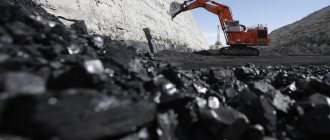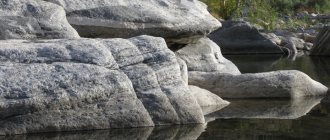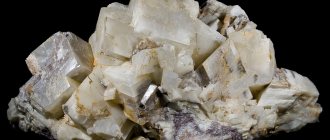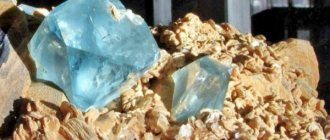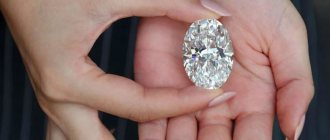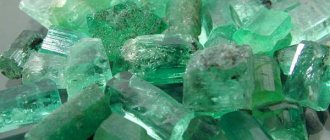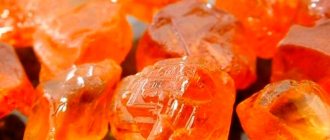On geographical maps, an attentive reader must have noticed circles, squares, diamonds and other icons. These symbols show what minerals are found in a given area. You will find information about basic notations in this article.
It should be clarified that maps of mineral resources are constantly changing and supplemented, because geologists regularly discover new deposits, and information about their location is included on the maps.
The riches of our land
On a geographical map, topographers apply special symbols and signs indicating what exactly is located in a particular place. For example, forests are indicated as trees or in the form of a green rectangle, seas - in the form of a blue rectangle, sandy terrain - in yellow, and so on.
The earth is rich in such minerals as oil, gas, coal, peat, black ore, non-ferrous ore, lime, clay, sand, granite, precious stones (ruby, diamond, sapphire, emerald), fresh water, mineral water and so on. Thanks to topographers, people find out in which area gas or oil is produced, and much more.
According to the designations of mineral resources on the map of Russia, it is rich in oil and gas (Tyumen, Tomsk, Novosibirsk, Perm, Orenburg regions, the Republic of Tatarstan, Bashkortostan and so on), coal (Pechora, Kuznetsk, South Yakutsk basins), oil shale (St. -Petersburg deposit), peat (Northern Urals, Western Siberia), iron ores (Kursk), copper (Norilsk) and much more.
Students learn how minerals are mined, how they are cultivated, and how they need to be protected.
Fifth place. Angola. $1.2 billion
Fucauma diamond mine in Angola
The economy of Angola today is based on the production and export of oil. It is this area that accounts for 85% of the country’s total GDP. Thanks to its oil component, the economy of this country is the fastest growing among all the states located in Africa slightly south of the Sahara. By the way, in 2008, the GDP growth of this state was as much as 15%, while the countries of Black Africa at that time showed only 5% growth. Per capita GNP in 2008 was $5,020. The presented indicator is actually the highest achievement for the represented region of the world.
Symbols of mineral resources on the map
Each fossil has its own designation. Let's look at the most common ones:
- Coal is designated in the shape of a black square.
- Brown coal is a white square with diagonal black stripes.
- Oil shale is a black parallelogram.
- Oil is a black elongated trapezoid, similar to a triangle.
- Gas is the same symbol as oil, only white.
- Iron ore is a black triangle.
- Aluminum ores - a white circle inside a black square.
- Copper - black rectangle.
- Gold is a black and white circle, colored in half.
- Table salt - white cube.
Knowing what a particular symbol means, you can easily decipher any card.
Kimberly. South Africa
South Africa is one of the world's leaders in diamond mining, and the group of deposits in the Kimberley area is one of the largest in the world. For example, the reserves of the Venice mine of the De Birs corporation are estimated at 102 million carats.
In the photo: The Big Hole kimberlite pipe is a landmark in Kimberley, South Africa.
The first deposits were discovered here back in 1871, and the total area of South African deposits is 196 thousand m². It is interesting that it was from this place that the name of the rock containing diamonds was given.
Diamonds are extracted from 12 kimberlite pipes using open and closed methods, and the reserves of the valuable earth mineral will last for decades.
7
Brief information about minerals
There are a lot of ores and minerals in nature that are used in modern human life. The predominant amount of minerals are in the solid state, but there are also liquid and gaseous ones. Symbols of minerals on the map can be colored black or red, depending on their origin - igneous or sedimentary.
- 1. Ore;
- 1.1. Black;
- 1.2. Colored;
- 1.3. Precious;
- 2. Nonmetallic
- 2.1. Base stones;
- 2.2. Semi-precious;
- 2.3. Precious
- 3. Liquids:
- 3.1. Mineral water;
- 3.2. Oil;
- 4. Gases.
They are formed deep underground, lying under layers of sedimentary rocks. Many minerals are the product of decay of organic remains without access to oxygen. A huge amount of equipment, resources and people are used to develop deposits.
But the basic symbols of minerals show not only their type, but also have a purposeful meaning. Almost all ores, fuels, metals, gases have their own image, with which they can be easily found on the map.
The use of symbols for minerals is necessary to facilitate the interpretation of the map so that there is no letter confusion. Several dozen different ores can be mined in one area; it would be inconvenient to label them in words.
Non-metallic minerals
This is one of the largest groups of field designations, examining which you can notice a special pattern. The salt will look like a cube with three sides. If it is ordinary, it is not painted over, unlike potassium, where only one front edge remains clean. But Glauber's salt is indicated by a completely different sign, which looks like peat. This is a figure of three rectangles, two of which lie at the base, and the last one is on top of them in the center. It is completely painted black.
To designate fossil semi-precious stones, such as apatites, a black circle with a white stripe in the middle is used. If you look closely, it looks similar to the Brick railroad sign, but with a different coloring. For phosphorites, the same image is used, but it is flipped 90 degrees.
For minerals, a square is often used. Mica is a figure with a descending black stripe from the left to the right corner; clay is also indicated. A similar sign for kaolin will have the upper side of the square painted over, and for limestone there will be two lines crossed with each other, like two bisectors.
Composition, formula and properties of diamonds
Therefore, many people are interested in how a stone is formed, what is the formula of a diamond, and whether it can be grown in a laboratory. Scientists still, after a century of experiments, cannot answer all questions with accuracy, since in some situations the stone behaves abnormally.
Substance formula
Diamond is made entirely of carbon. This element is contained about 0.15% in the Earth's crust. The atomic number of the substance is 6, which indicates the number of protons in the nucleus. Accordingly, diamonds, which consist entirely of carbon, that is, are an allotropic form of this substance, have the same atomic number.
Such a concept as a form of allotropic modification means that from a simple substance, for example, carbon, other simple substances can be formed, which will differ from each other in properties and atomic structure.
That is, the content is the same, but the form and appearance are completely different, take at least the opposites: graphite and diamond. Moreover, carbon is one of the few substances that has several forms of modifications.
There are substances that consist only of carbon:
An interesting question for scientists is whether one allotropic modification can be converted into another. This is exactly what they are doing in relation to graphite and other substances from this group.
Because the cost of a diamond is the highest, and the price of other modifications is lower. So far, the process is only possible in the opposite direction: if a diamond is heated without air to a temperature of over 500 degrees Celsius, the stone will explode and turn into graphite.
Moreover, further melting of the stone shows anomalous results, different from other substances. But the reaction does not occur in the opposite direction.
The difference between the modifications is explained by the structure of the crystal lattice of the substance. The chemical formula does not play any role here. The whole point lies in the spatial configuration of carbon atoms and the connections between them. Thus, in the structure of diamond, the lattice has a cubic structure.
The bond between atoms is the strongest, from a chemical point of view, covalent. Moreover, the cubic system uses only 18 atoms and is considered the densest form of packing of these particles. Therefore, diamond is the hardest substance on the planet.
At the centers of the tetrahedron faces there are also atoms bonded to each other covalently. But if we consider the same graphite, then in its crystal lattice some of the bonds are covalent, and some are disulfide, which tends to break. As a result, electrons can migrate, and the substance acquires metallic properties.
But this is an analysis of the atomic forms of carbon, since it is the atoms that form the crystal lattice. But recently, scientists have discovered molecular forms of the substance in the composition of fullerenes, polyhedra made of carbon. Now new molecular compounds containing carbon have been discovered - from C60 to C540, which are being studied.
Based on the formula, as well as the configuration of the atoms, scientists try to recreate the picture in the laboratory. In nature, diamonds are found in kimberlite and lamproite pipes, as well as placers. Stones are formed over millions of years under certain conditions involving igneous rocks, seismic activity, and also under the influence of high temperatures.
There is also a version about the introduction of diamonds along with meteorites, since there is quite a lot of carbon in outer space. Scientists also discovered one of its modifications—losdaleite—in meteorites.
Today, diamonds are produced in the following ways:
Diamond formula
Physical properties - this is one of the hardest substances with a density of 3.47-3.55 g/cm
, usually colorless, but can have different colors, transparent, brittle, shiny.
Conducts electricity poorly. Does not melt, sublimates at 3506.85°C, stable when heated in the absence of oxygen.
The diamond crystal lattice is face-centered cubic (a = 0.357 nm, z = 4). The carbon atoms in diamond have
The figure below shows the unit cell of a diamond:
Chemical properties of diamond
Since diamond is a very hard substance, it is quite inert, so its main reaction is combustion in oxygen at high temperatures:
Source
Map symbols.
Post by Romantic » 22 Dec 2016, 09:05
Map symbols.
Post by Bola » Dec 22, 2016, 10:29 am
Map symbols.
Post by Bola » Dec 22, 2016, 11:06 am
Map symbols.
Post by Chicha » Dec 15, 2022 6:57 pm
Map symbols.
Post by Chicha » 16 Dec 2022, 07:17
Map symbols.
Post by Kamchadal » 16 Dec 2022, 07:20
Map symbols.
Post by Mikhalych » 16 Dec 2022, 07:22
Map symbols.
Post by Kamchadal » 16 Dec 2022, 07:29
Map symbols.
Post by Mikhalych » 16 Dec 2022, 07:32
Map symbols.
Post by Chicha » 16 Dec 2022, 07:40
Map symbols.
Post by Mikhalych » 16 Dec 2022, 07:42
Map symbols.
Post by Chicha » 16 Dec 2022, 07:56
Map symbols.
Post by Kamchadal » 16 Dec 2022, 09:13
Map symbols.
Post by Kamchadal » 16 Dec 2022, 09:18
Map symbols.
Post by Mikhalych » 16 Dec 2022, 09:33
Map symbols.
Post by Chicha » 23 Dec 2022, 08:43
Map symbols.
Post by Chicha » Dec 23, 2022 1:02 pm
Description of the icons
Let's see what the symbols of minerals look like. Sometimes the shape of a sign is associated with a specific substance or its name. Such icons are easier to remember.
Oil and gas are drawn in the shape of an elongated isosceles triangle, they look like the drilling rigs with which they are extracted. The oil sign is painted black, oil is also black. The gas symbol is not filled in; natural gas is colorless.
Coals are depicted as a square - shaded refers to hard coal, shaded refers to brown coal.
The peat icon looks like a stack of white bricks. As a rule, peat for fuel is pressed into briquettes.
Rice. 2. Peat briquettes.
Signs related to metals need to be remembered, but some are depicted in the form of the first letter of the name - tin is indicated by the letter O lying on its side, manganese is painted over M.
Precious stones are drawn as stars with 6 rays. Compare the icon to a diamond after it is cut, when it is called a brilliant and glows like a star.
Rice. 3. Diamond.
An unusual diamond was found in Yakutia and they called it a matryoshka - there is a cavity inside the crystal, in which a small diamond moves freely.
Deposit named after M. Lomonosov. Russia
Diamonds in Russia are mined not only in Yakutia. Thus, the largest deposit in the European part of the Russian Federation, located near the village of Pomorye in the Arkhangelsk region, was discovered in 1980.
The first exploration work was carried out in 1994, but comprehensive production began in 2005. The deposit named after the famous Russian scientist is a complex of six kimberlite pipes.
It is famous for the fact that in the summer of 2009 a diamond weighing 30.6 carats was discovered here, the largest to date found in Europe.
11
Diamond industry in recent history
Since 1980, global industrial production of diamonds has increased 3-4 times, but, nevertheless, diamonds are still considered an extremely scarce natural resource. Over the past 25 years, more than 12 thousand kimberlite deposits have been discovered in the world. But at the same time, only 1% of these deposits contain a sufficient amount of diamonds to make their mining economically profitable.
Naturally, this is due to the fact that no one sifts tons of rock through a sieve anymore, dreaming of finding one small diamond. Today, diamond mining is a labor-intensive process that requires both huge investments and high technical skills. The size of industrial diamond mines is so large that they can be seen from space.
The most widely represented diamond deposits are on the African continent. In some politically unstable countries in West and Central Africa, the military junta has taken strict control of diamond mining. Using funds from the sale of jewelry to invest in military operations in the country. Stones from these countries, most often smuggled, are called “blood diamonds” or “stones of grief and war.”
Therefore, in 2002, the UN initiated the so-called Kimberlite Process, which was supposed to stop the smuggling of diamonds from military conflict zones and the use of the proceeds to further continue the war. But still, this problem could not be completely solved, because in African countries, their state of customs control, smuggling is flourishing and the export of diamonds continues. Among other things, diamonds are also supplied by countries that are not in a state of direct hostilities, and these diamonds are considered “clean”, but are also used to escalate a military conflict.
